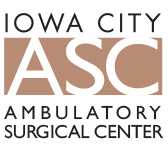The shoulder is a complex joint with a wide range of movements. In part, that’s why shoulder injuries can be so painful. Often, these injuries are unexpected–the result, for example, of a rough landing.

In other cases, shoulder injuries can be the result of repetitive motion, aging, or other strains. Maybe you threw one too many curveballs back in the day–and that’s catching up with you now that you’re older.
Translated from its ancient Greek inspiration, “shoulder arthroscopy” literally means “to look inside the joint of the shoulder.” And that’s precisely what this procedure can accomplish. By inserting a tiny camera through a keyhole-sized incision, your orthopedic surgeon will be able to see–and often repair–damage to your shoulder.
How Does Shoulder Arthroscopy Work?
Most often, shoulder arthroscopy is warranted due to an injury. Unless there’s a reason to suspect damage has occurred, there’s no need to undergo this procedure on a shoulder that feels great.
Usually, shoulder arthroscopy surgery is performed on an outpatient basis. You’ll arrive either at a hospital or an ambulatory surgery center, and you’ll be given a nerve block or local anesthetic (in some cases, general anesthesia may be warranted, but that’s typically decided on an individual basis).
Once the anesthesia is administered, your orthopedic surgeon can get to work on your shoulder.
What Happens During a Shoulder Arthroscopy?
- Your surgeon will make a small incision (what’s typically referred to as “keyhole size” or “buttonhole size”) in your shoulder.
- Then, a tiny camera on a tube (called an arthroscope) is inserted through the incision. The camera projects images on a nearby screen, allowing your orthopedic team to view and inspect the damage to your shoulder joint.
- Depending on the scope and severity of the damage, your surgeon may make additional keyhole-sized incisions and insert tiny surgical instruments.
- These instruments can then perform specific repairs to your shoulder. In some cases, this could mean repairing ligaments and tendons or clearing away damaged tissue.
- Once the repairs are complete, all tools are removed and the incisions are closed.
- After about an hour or so in the recovery room, you’ll be able to return home for the rest of your recovery and recuperation.
How Long Does Recovery Take?
Recovering from your procedure could take anywhere from a few days to a few months. That probably seems like a wide disparity. But it really depends on the nature of your individual arthroscopy procedure.
In many ways, it’s not just the surgery that your body is recovering from–it’s the initial damage to your shoulder that is healing. The more significant the shoulder injury, the longer the recovery time you can expect.
During your recovery period, you may also be tasked with engaging in physical therapy to aid in the healing process. Physical therapy is absolutely essential, as it will help you regain movement and mobility in your arm. Your physical therapist will likely give you a list of exercises after shoulder arthroscopy surgery you should perform (and how often you should perform them).
Knowing what to expect after shoulder arthroscopy surgery can help you better prepare for your surgery and your recovery.
How Often Should You Ice an Arthroscopy Shoulder Surgery During Recovery?
During the first week or two after your procedure, it’s essential that you ice your shoulder. Once your surgical dressing is removed, most physicians will recommend icing three or four times a day for a duration of twenty minutes or so. However, you may be given more individualized instructions depending on your unique condition.
If you have questions about whether you should ice your shoulder after arthroscopy, you should talk to your orthopedic team.
What Does Shoulder Arthroscopy Treat?
Shoulder arthroscopy is the second most common orthopedic surgery performed in the United States. So it’s no surprise that this procedure treats a wide variety of common shoulder problems. Some of the most commonly treated conditions include:
- Rotator cuff injuries (such as tears and tendonitis)
- Bone spurs
- Injuries to the bicep tendons
- Arthritis (medically known as osteoarthritis)
- And more
If your shoulder has been injured–or is simply presenting more pain than is usual, talk to your healthcare provider about orthopedic solutions, such as shoulder arthroscopy. As a minimally invasive procedure, shoulder arthroscopy is designed to get your shoulder working again with minimal pain and downtime.
The Benefits of Shoulder Arthroscopy at an ASC
Because shoulder arthroscopy is performed on an outpatient basis, many patients will have the option of undergoing treatment at an Ambulatory Surgery Center (ASC). ASCs are specially designed facilities that provide patients with some distinct benefits over hospitals:
- ASCs are less crowded with a higher staff-to-patient ratio.
- Many patients experience significant cost savings when compared to similar procedures performed in a hospital setting.
- Typically, patients also find ASCs more convenient. The overall experience is more clinic-like than hospital-like.
- ASCs may also feel more comfortable. You’ll have more familiarity with the staff, nurses, and physician team that’s helping you.
Ambulatory surgery centers offer hospital-level care and safety without anxiety and stress. If you want to have your shoulder arthroscopy performed in a comfortable setting that promotes healing, talk to your orthopedic team about having your procedure performed at an ASC.





